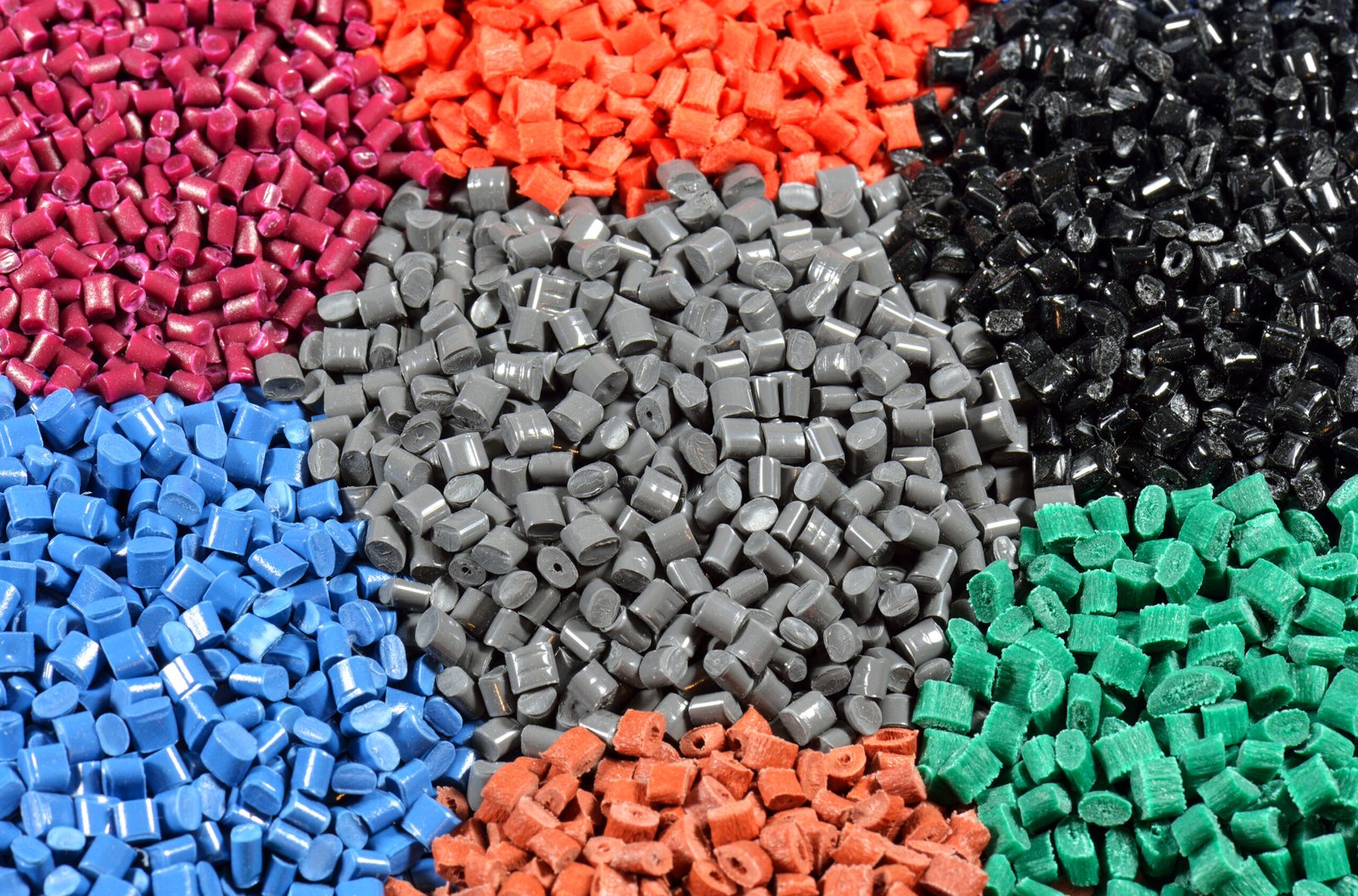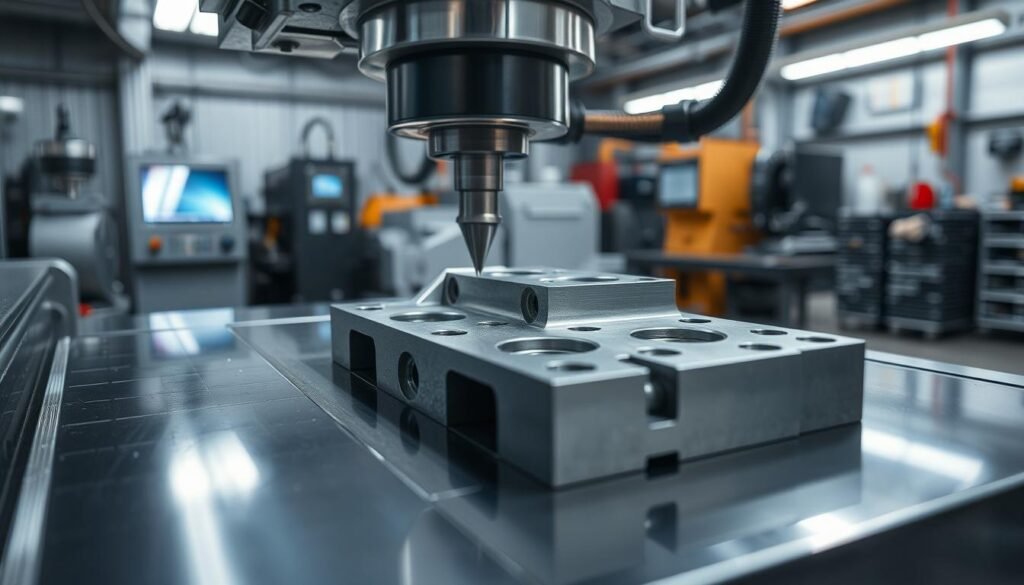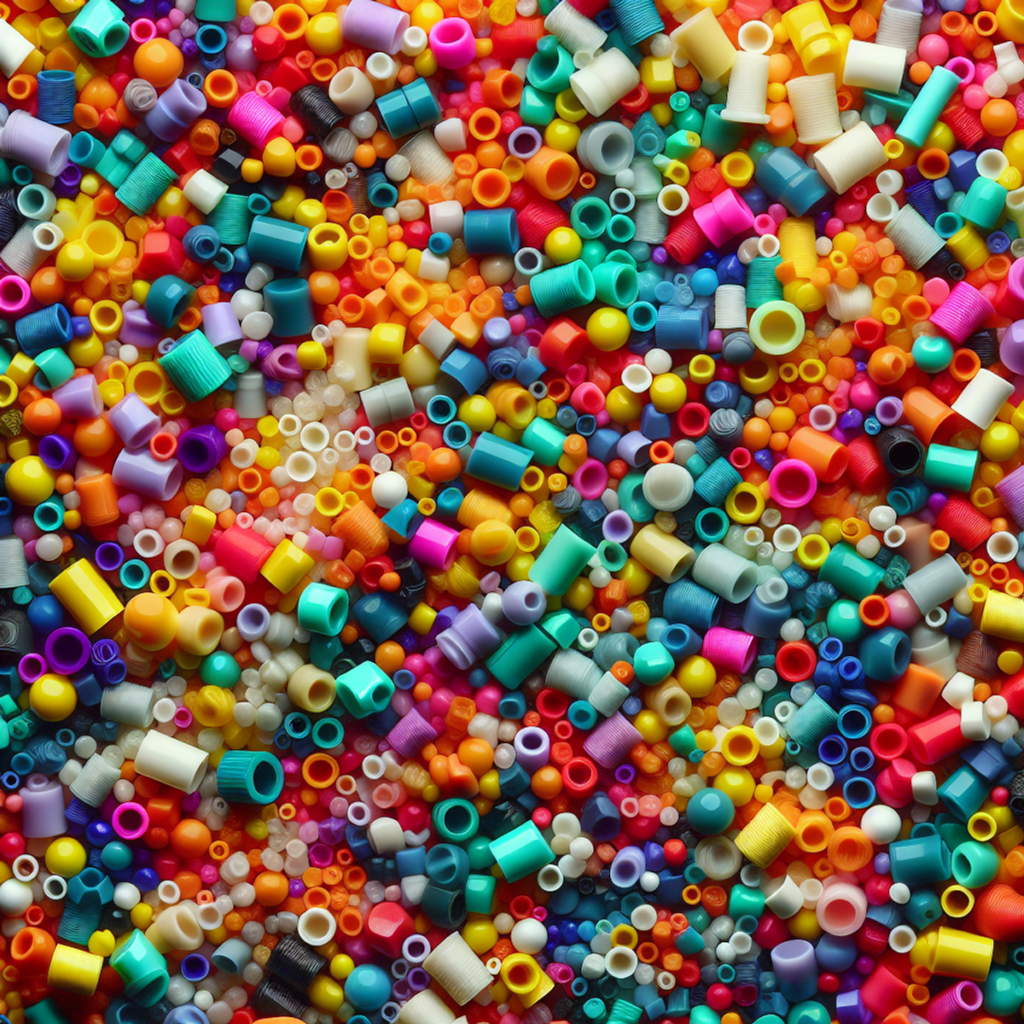Introduction
Calculating manufacturing costs is crucial for any plastic product manufacturer. Understanding these costs not only helps in setting competitive wholesale prices but also ensures profitability and long-term sustainability. Overlooking or underestimating manufacturing expenses can lead to significant financial losses, making it imperative to get a firm grasp on all elements affecting the cost structure.
This article delves into several key areas:
Factors Affecting Plastic Product Manufacturing Costs
- Raw material costs
- Labor costs
- Overhead costs
- Equipment and machinery costs
Calculating Plastic Product Manufacturing Costs
- Costing methods: Job costing vs. process costing
- Step-by-step cost calculation process
Importance of Wholesale Pricing for Plastic Product Manufacturers
- Impact on profitability and competitiveness
- Key considerations for setting wholesale prices
By understanding each of these facets, you can implement effective cost calculation strategies that enhance your business’s financial health and market position.
Factors Affecting Plastic Product Manufacturing Costs
1. Raw Material Costs
Types of Raw Materials
Raw material costs are a significant part of plastic product manufacturing expenses. The main types of raw materials used are:
- Polyethylene (PE): Widely used for packaging films, containers, and household goods. It is known for being flexible, durable, and resistant to moisture.
- Polypropylene (PP): Commonly used in automotive parts, textiles, and consumer products because it has a high melting point and is resistant to chemicals.
- Polyvinyl Chloride (PVC): Used in construction materials like pipes and fittings, as well as medical devices. It offers excellent rigidity and strength.
- Polystyrene (PS): Used in disposable cutlery, CD cases, and insulation materials. It is clear and easy to mold.
- Acrylonitrile Butadiene Styrene (ABS): Preferred for electronic housings, automotive components, and toys because it is tough and impact-resistant.
Impact on Costs
The choice of raw material directly affects costs due to differences in pricing based on factors such as availability, market demand, and production processes:
- Market Demand: Materials like Polyethylene that are in high demand might have prices that change often because they are used so much.
- Availability: Some polymers are not easily available, which can make their prices go up.
- Production Process: Certain materials are more expensive to make because the process of turning them into plastic is complicated.
Pricing Variations
Changes in prices for raw materials can happen because of several reasons:
- Global Oil Prices: Since most plastics come from petrochemicals (chemicals made from oil), when the price of oil changes a lot, it also changes the cost of raw materials.
- Supply Chain Disruptions: Natural disasters, problems between countries, or issues with moving things around can all cause the supply chain to break. When this happens, prices can go up.
- Economic Conditions: When the economy is not stable or if there is too much inflation (prices going up), it can make the cost of raw materials increase.
Strategies for Managing Raw Material Costs
To manage raw material costs well:
- Buy in Bulk:
- Purchasing raw materials in large amounts can lead to getting a discount because you are buying more.
- Making long-term contracts with suppliers can help keep prices steady and not change too much.
- Find Other Places to Get Materials From:
- If you find other suppliers who can give you what you need, it lowers the risk of relying on just one source.
- Looking into using recycled or bio-based plastics as cheaper alternatives.
- Keep Track of What You Have in Stock:
- Using systems that only bring in materials when they are needed helps reduce the cost of storing them and also makes sure there is not too much waste.
- Regularly checking how much inventory (stock) you have helps make sure it is being managed well.
- Be Good at Negotiating:
- Building strong relationships with suppliers helps when talking about prices.
- Checking supplier contracts every now and then makes sure you are still getting a good deal compared to others.
- Use New Technology:
- Investing in machines or tools that help use materials better reduces waste and makes everything cheaper.
- Trying out different ways of making things faster and easier means you get more plastic from the same amount of materials.
- Study the Market:
- Keeping an eye on what is happening in the market helps you change how you buy things before it becomes a problem.
- Using tools that can guess what prices will do in the future helps with planning.
Balancing Quality and Cost-effectiveness
You should not forget about quality when trying to save money on materials:
“Both quality and cost are important. This makes sure that the final product is good enough while also being affordable.”
- Test New Materials:
- Before using something different, make sure to check if it works well enough.
- Check Suppliers Regularly:
- Making sure suppliers always give you good things means your products will be good too.
- Look at the Costs and Benefits:
- Before changing anything, think about how much it will cost and what you will gain from doing it.
- Think About Sustainability:
- Being careful about where materials come from is good for your brand and also saves money in the long run because you use less resources.
By knowing more about different materials, why their prices change, and ways to manage them well, you can make better choices that help your manufacturing costs without making things worse.
2. Labor Costs
Labor costs play a significant role in the plastic product manufacturing process. It’s important to understand these costs and how different types of labor contribute to the overall expense.
Types of Labor Involved
In the plastic product manufacturing industry, labor can be broadly categorized into:
- Direct Labor:
- Machine Operators: They operate machinery like injection molding machines, blow molding machines, and extrusion equipment.
- Assemblers: Their job is to assemble parts, check for quality defects, and ensure that products meet specifications.
- Indirect Labor:
- Maintenance Technicians: They are responsible for machine upkeep and repairs.
- Quality Control Inspectors: Their role is to ensure that products meet quality standards.
- Supervisors and Managers: They oversee production processes and manage labor teams.
Each type of labor impacts costs differently. Direct labor costs tend to vary based on production volume, while indirect labor costs remain more fixed.
Calculating Labor Costs Per Unit
To calculate labor costs per unit produced, follow these steps:
- Determine Direct Labor Costs:
- Add up the wages of all machine operators and assemblers.
- Include overtime pay if applicable.
- Calculate Indirect Labor Costs:
- Add up the wages of maintenance technicians, quality control inspectors, supervisors, and managers.
- Total Labor Costs:
- Sum both direct and indirect labor costs to get the total labor cost.
- Divide by Total Units Produced:
- Divide the total labor cost by the number of units produced in a specific period to find the cost per unit.
Example Calculation:
- Monthly wages for machine operators: $10,000
- Monthly wages for assemblers: $5,000
- Monthly wages for maintenance technicians: $3,000
- Monthly wages for quality control inspectors: $2,000
- Monthly wages for supervisors and managers: $4,000
Total monthly labor cost = $10,000 + $5,000 + $3,000 + $2,000 + $4,000 = $24,000
If 20,000 units are produced in a month:
Labor cost per unit = $24,000 / 20,000 units = $1.20 per unit
Factors Influencing Labor Costs
Several factors can influence labor costs in plastic product manufacturing:
- Skill Level:
- Higher-skilled workers command higher wages but may increase efficiency and reduce waste.
- Location:
- Geographic location affects wage rates due to varying living costs. Manufacturing in areas with lower living costs helps reduce wage expenses.
- Automation Level:
- High levels of automation can reduce reliance on manual labor but require significant upfront investment in machinery.
- Shift Patterns:
- Utilizing multiple shifts increases production capacity but also increases wage expenses due to night shift premiums or overtime pay.
Tips for Optimizing Labor Expenses
To manage and optimize your labor expenses effectively:
- Invest in Training:
- Well-trained employees are more efficient and make fewer mistakes which saves both time and material costs.
- Leverage Automation:
- Invest in automated machinery where feasible to reduce direct labor requirements.
- Optimize Staffing Levels:
- Ensure you have the right number of staff to meet production needs without overstaffing.
- Consider Location Strategically:
- Weigh the benefits of lower wage regions against potential logistical challenges or increased transportation costs.
- Implement Lean Manufacturing Principles:
- Focus on eliminating waste in all forms including time spent waiting or unnecessary movements which enhances productivity.
By understanding these factors affecting costs related to plastic product manufacturing and implementing strategies to optimize them, you can achieve a balance between maintaining high-quality standards and managing expenses effectively.
3. Overhead Costs
Overhead costs in plastic product manufacturing encompass a broad range of expenses that are not directly tied to the production of goods. Understanding and managing these costs is crucial for maintaining profitability and competitiveness in the market.
Definition and Examples
Overhead costs can be categorized into several types:
- Fixed overhead costs: These remain constant regardless of production volume. Examples include rent, salaries for administrative staff, and insurance.
- Variable overhead costs: These fluctuate with production levels. Examples include utility bills, maintenance costs, and factory supplies.
- Semi-variable overhead costs: Partially fixed and partially variable. For instance, machinery maintenance might have a base cost plus additional expenses based on usage.
Common examples of overhead costs:
- Rent and property taxes: The cost of leasing or owning the manufacturing facility.
- Utilities: Electricity, water, heating, and cooling expenses required to operate the facility.
- Depreciation: The reduction in value of machinery and equipment over time.
- Insurance: Coverage for buildings, machinery, liability, and employee health plans.
- Administrative expenses: Salaries for non-production staff, office supplies, and professional fees (e.g., accounting services).
Strategies for Allocating Overhead Costs
Accurate allocation of overhead costs ensures that each product reflects its true cost of production. Methods for allocating these expenses include:
- Direct Allocation: Allocate each overhead cost directly to the product or department benefiting from it. For example, assign maintenance costs to specific machines used in production.
- Activity-Based Costing (ABC): Identify activities driving overhead costs (e.g., machine setups) and allocate expenses based on their usage by different products or departments.
- Plantwide Allocation Rate: Use a single rate to allocate all overhead costs across the entire plant based on a common factor such as direct labor hours or machine hours.
Reducing Overhead Expenses
Efficient management can significantly impact a company’s bottom line. Strategies to reduce overhead costs include:
- Energy Efficiency: Implement energy-saving measures like LED lighting, energy-efficient machinery, and optimized heating/cooling systems.
- Preventive Maintenance: Regularly service equipment to prevent costly breakdowns and extend machinery life.
- Lean Manufacturing Principles: Adopt lean practices to minimize waste in processes. This includes reducing excess inventory, improving workflow efficiency, and eliminating non-value-added activities.
- Outsourcing Non-Core Activities: Contract out non-core functions such as janitorial services or IT support to specialized vendors.
- Negotiating Better Terms: Work with suppliers to negotiate better terms for utilities, insurance premiums, or lease agreements.
In plastic product manufacturing, controlling overhead costs while maintaining quality can provide a competitive edge. By identifying key areas where reductions are possible without compromising operational efficiency or product quality, you can enhance overall profitability.
4. Equipment and Machinery Costs
Understanding the costs associated with equipment and machinery is crucial for any plastic product manufacturer. These costs significantly impact the overall manufacturing expenses and can influence pricing, profitability, and competitiveness. Key cost factors include initial investment, depreciation, and maintenance.
Types of Equipment and Machinery Used
Plastic product manufacturing involves various types of equipment and machinery, each playing a specific role in the production process:
- Injection Molding Machines: These are perhaps the most common machines used in plastic manufacturing. They inject molten plastic into molds to create products.
- Extrusion Machines: Used for producing long continuous shapes like pipes or sheets by forcing molten plastic through a shaped die.
- Blow Molding Machines: Essential for making hollow plastic products like bottles and containers.
- Thermoforming Machines: These machines heat plastic sheets until pliable, then form them over molds to create various shapes.
- Rotational Molding Machines: Ideal for creating large hollow objects by rotating a mold filled with powdered plastic.
Each type of machine has its own cost implications based on its complexity, size, and production capacity.
Initial Investment Considerations
When investing in equipment and machinery, several factors need consideration:
- Purchase Cost: The initial price paid for acquiring the machinery.
- Installation Costs: Expenses associated with setting up the machinery, which can include foundation work, electrical wiring, and calibration.
- Training Costs: Ensuring staff can operate new machines effectively often requires training programs.
For example, an injection molding machine might range from $50,000 to over $200,000 depending on its specifications. Factoring these initial investments into your budget is essential for financial planning.
Depreciation Expenses
Machinery depreciates over time due to wear and tear. Calculating depreciation is crucial for understanding the long-term cost implications:
- Straight-Line Depreciation: This method divides the initial cost evenly over the machine’s useful life. For instance, if a $100,000 injection molding machine has a useful life of 10 years, annual depreciation would be $10,000.
- Declining Balance Depreciation: This method applies a fixed depreciation rate to the remaining book value each year. It results in higher depreciation expenses in the initial years.
Depreciation affects your financial statements and tax liabilities. Accurately accounting for it ensures you reflect true asset values.
Maintenance Expenses
Regular maintenance ensures machinery operates efficiently and prolongs its lifespan:
- Routine Maintenance: Includes regular inspections, cleaning, lubrication, and minor repairs. The cost varies but is essential for preventing major breakdowns.
- Unplanned Repairs: Unexpected issues can arise requiring immediate attention. Having contingency funds allocated helps manage such occurrences without disrupting operations.
For instance:
“A well-maintained injection molding machine can last up to 15 years or more.”
Ignoring maintenance can lead to higher long-term costs due to frequent repairs or early replacement needs.
Key Cost Factors Summarized
When considering equipment costs in plastic product manufacturing:
- Initial InvestmentPurchase price
- Installation costs
- Training expenses
- DepreciationStraight-line method
- Declining balance method
- MaintenanceRoutine upkeep
- Unplanned repairs
Balancing these factors effectively ensures smooth operations while keeping costs manageable. Every decision impacts your bottom line; thorough analysis helps make informed choices aligning with business goals.
Calculating Plastic Product Manufacturing Costs
Understanding how to accurately calculate manufacturing costs is crucial for any plastic product manufacturer. This process involves various elements, and choosing the right costing method is essential for precise financial planning. Two primary costing methods are typically used in the industry: job costing and process costing.
Costing Methods in Plastic Product Manufacturing
Job Costing and Process Costing are both prevalent methods, each suited to different manufacturing scenarios.
Job Costing
Job costing is used when products are manufactured based on specific orders. This method is ideal when each product or batch of products requires distinct specifications. Here’s how it works:
- Custom Orders: Job costing is perfect for businesses that produce custom plastic products. Each job has unique requirements, making it necessary to track costs individually.
- Cost Tracking: You track all expenses related to a specific job or order. This includes raw materials, labor, and overhead costs.
- Detailed Reporting: Provides detailed cost reports for each job, enabling better control over individual project expenses.
Example: A company producing custom plastic components for medical devices would benefit from job costing due to the unique requirements of each order.
Process Costing
Process costing is more suitable for continuous production processes where identical products are manufactured in large quantities. Key aspects include:
- Mass Production: Ideal for manufacturers producing large volumes of uniform products.
- Cost Allocation: Costs are averaged over all units produced during a specific period, simplifying the calculation process.
- Efficiency Tracking: Helps monitor efficiency by comparing actual production costs with standard costs.
Example: A manufacturer producing plastic bottles in bulk would use process costing as it allows for efficient cost management across large production runs.
Applicability in Plastic Product Manufacturing
Choosing between job costing and process costing depends on your production style:
- If your business focuses on custom or low-volume orders, job costing provides the detailed financial insight needed to manage individual project expenses effectively.
- For high-volume, uniform product manufacturing, process costing offers streamlined cost allocation and helps maintain production efficiency.
Recommendations:
- Assess Your Production Type: Determine whether your operations are more aligned with custom jobs or mass production.
- Combine Methods if Necessary: In some cases, a hybrid approach might be beneficial. For example, using job costing for custom orders within an overall mass production framework can provide comprehensive financial insights.
Step-by-step Cost Calculation Process
Accurately calculating plastic product manufacturing costs involves several steps:
- Gather Data on Raw Material Prices and Quantities:Identify all raw materials required.
- Obtain current market prices.
- Calculate the total cost based on quantities needed per unit of product.
- Determine Labor Costs:Identify all labor involved in the production process.
- Calculate wages and benefits based on hours worked per unit produced.
- Include indirect labor costs such as supervisors and quality control personnel.
- Allocate Overhead Expenses:List all overhead costs (e.g., utilities, rent, administrative expenses).
- Distribute these costs across all units produced based on a suitable allocation base (e.g., machine hours or direct labor hours).
- Calculate Equipment and Machinery Costs:Determine initial investment costs for equipment and machinery.
- Account for depreciation expenses over the useful life of the assets.
- Include maintenance and repair costs.
- Summarize Total Manufacturing Costs:Combine raw material, labor, overhead, and equipment/machinery costs to determine the total manufacturing cost per unit.
By following these steps systematically, you ensure that all cost components are accurately captured, leading to more precise pricing strategies.
Tools and Software Recommendations:
- ERP Systems: Enterprise Resource Planning (ERP) software like SAP or Oracle can streamline data collection and cost calculation processes.
- Cost Accounting Software: Tools such as QuickBooks or FreshBooks provide robust features for tracking individual job costs
Step-by-step Cost Calculation Process
Accurate cost calculation is crucial for plastic product manufacturers to ensure profitability and sustainability. It involves several steps, each contributing to a comprehensive understanding of the expenses incurred during production. This section provides a detailed guide on how to calculate plastic product manufacturing costs.
1. Gathering Data on Raw Material Prices and Quantities
Start by identifying all the raw materials required for your plastic products. Common materials include:
- Polyethylene (PE)
- Polypropylene (PP)
- Polyvinyl Chloride (PVC)
- Acrylonitrile Butadiene Styrene (ABS)
For each material, gather data on:
- Current market prices: Prices can fluctuate based on market conditions, so it’s essential to have up-to-date figures.
- Quantities needed: Determine the amount of each material required per unit of product.
Example: If you need 2 kg of PE per product and the price is $1.50 per kg, your raw material cost for PE would be $3 per unit.
2. Determining Labor Costs
Labor costs can significantly impact your overall manufacturing expenses. To calculate these costs:
- Identify types of labor involved: This includes operators, supervisors, quality control personnel, etc.
- Calculate hourly wages: Multiply the number of hours worked by the hourly wage rate.
Example: If an operator works 8 hours at an hourly rate of $20, the daily labor cost is $160.
To find the labor cost per unit:
- Determine the total labor hours required to produce one unit.
- Multiply by the hourly wage rate.
Example: If producing one unit takes 0.5 hours and the hourly rate is $20, the labor cost per unit is $10.
3. Allocating Overhead Expenses
Overhead costs cover indirect expenses such as utilities, rent, administrative salaries, and maintenance. To allocate these costs:
- Identify all overhead expenses.
- Choose a basis for allocation (e.g., machine hours, labor hours).
Example: If your total monthly overhead is $10,000 and you produce 1,000 units monthly using 500 machine hours:
- Overhead cost per machine hour = $10,000 ÷ 500 = $20
- Overhead cost per unit (assuming each unit takes 0.5 machine hours) = $20 × 0.5 = $10*
4. Including Equipment and Machinery Costs
Equipment and machinery represent significant investments in plastic product manufacturing. Calculate these costs by considering:
- Initial investment: The purchase price of machinery.
- Depreciation: Spread out the initial investment over its useful life.
- Maintenance expenses: Regular upkeep to ensure optimal performance.
Example: A machine costing $50,000 with a useful life of 10 years has an annual depreciation expense of $5,000.
To find equipment cost per unit:
- Calculate annual depreciation.
- Add annual maintenance expenses.
- Divide by annual production volume.
Example: If annual production is 100,000 units and annual maintenance is $1,000:
- Total annual equipment cost = $5,000 + $1,000 = $6,000
- Equipment cost per unit = $6,000 ÷ 100,000 = $0.06
5. Summing Up All Costs
Combine all identified costs to calculate total manufacturing costs per unit:
Example:
| Cost Component | Amount | |————————-|——————–| | Raw Material Cost | $3 | | Labor Cost | $10 | | Overhead Cost | $10 | | Equipment/Machinery Cost| $0.06 | | Total Manufacturing Cost | $23.06 |
By understanding these steps and accurately calculating each component’s cost, you can better manage your finances.
the plastic product manufacturing industry. In the next section, we will explore some key cost management strategies that can further support your business success.
Conclusion
Implementing effective cost calculation strategies is essential for any plastic product manufacturer aiming to enhance profitability and sustainability. By accurately calculating manufacturing costs, you can gain a clear understanding of your expenses, enabling you to set competitive prices without compromising on quality.
Key Takeaways:
- Accurate Cost Analysis: Regularly evaluate raw material costs, labor expenses, overheads, and equipment investments.
- Strategic Pricing: Use detailed cost data to inform your pricing strategy, ensuring it reflects both production costs and market dynamics.
- Sustainable Practices: Balancing cost-effectiveness with quality encourages sustainable manufacturing practices that benefit the long-term health of your business.
Engaging in these practices not only aids in maintaining a competitive edge but also promotes financial health and operational efficiency. Focus on refining your cost calculation processes to drive better decision-making and achieve greater success in the plastic product manufacturing industry.
FAQs (Frequently Asked Questions)
What are the key factors affecting plastic product manufacturing costs?
The key factors affecting plastic product manufacturing costs include raw material costs, labor costs, overhead costs, and equipment and machinery costs.
How do different types of raw materials impact plastic product manufacturing costs?
Different types of raw materials can impact plastic product manufacturing costs through pricing variations and quality considerations. It is important to manage raw material costs effectively while maintaining a balance between quality and cost-effectiveness in sourcing.
What are the types of labor involved in the plastic product manufacturing process, and how can labor costs be calculated?
The types of labor involved in the plastic product manufacturing process can include skilled and unskilled labor. Calculating labor costs per unit produced involves considering factors such as skill level, location, and optimization strategies for managing expenses.
What are overhead costs in the context of plastic product manufacturing, and how can they be allocated and reduced?
Overhead costs in plastic product manufacturing refer to expenses such as rent, utilities, and administrative salaries. Strategies for allocating and reducing these expenses can include efficient resource utilization and cost-saving measures.
What are the differences between job costing and process costing, and which method is recommended for plastic product manufacturing?
Job costing involves tracking expenses for individual custom products, while process costing averages expenses across a large number of similar units. The recommended method for plastic product manufacturing depends on the production process complexity and customization levels.
How can plastic product manufacturers calculate their manufacturing costs effectively?
Plastic product manufacturers can calculate their manufacturing costs effectively by gathering data on raw material prices and quantities, determining labor costs per unit produced, and allocating overhead expenses. Accurate cost calculation is essential for improving profitability and sustainability.






